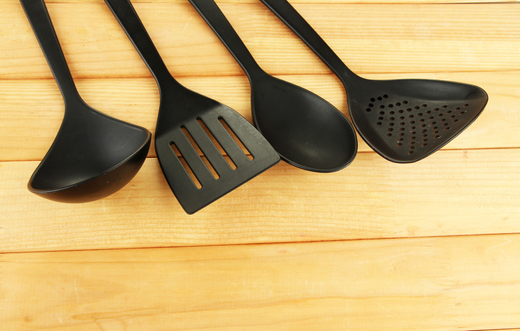Between farm and final table scraps, nearly 40% of all food in America goes to waste each year. The food waste problem is real, but it can be solved. Read on to learn how to reduce food waste at home. Plus, use these four simple tips to reduce food waste at school (and the office).
Food Waste: How To Reduce It Every Day
The food waste problem can appear daunting, but our personal choices truly can make a big difference. Unlike other environmental issues that often feel beyond our control, you can start tackling food waste right now. And you might be surprised by how much power your daily choices have! Start with these tips for reducing food waste at home, school, and at the office.
How To Reduce Food Waste At Home: Grocery Store To Compost Bin
Make a weekly meal plan (and stick with it)
Before you head to the store, make a meal plan for the week. By mapping out meals for each day, you’ll be able to make better decisions at the grocery store. This will lower the likelihood of over purchasing food (and the chance that food will go bad before you can eat it). Start planning with this tasty and simple tortilla soup recipe!

Buy the not-so-perfect produce
Do you typically search for the most perfect apples? Remember, a large part of the grocery store food waste problem is due to cosmetic issues. Instead of shying away from a little imperfection, embrace the chance to save some produce from a wasteful end. Food delivery services like Imperfect Foods and Misfits Market deliver produce that doesn’t make the cosmetic cut for grocery stores straight to your door. Plus, you’ll find this “rejected produce” is usually less expensive, which is a great way to get quality, organic items at a lower cost.
Want to go the extra mile? Reduce the footprint of your grocery store trip by choosing produce that’s locally grown and in-season.
Cook with what you’ve got
In the middle of a busy week, it can be easy to feel like there’s “nothing to eat” at home. Fight the urge to order out or run to the market again without taking a look at what’s in front of you. Cook with the food you already have on hand, particularly if it’s nearing its best-by date. In fact, you make it into a fun challenge! Have some items that need to be cooked up, but not sure what to make? Turn it into a cooking challenge with your family, and see who can make the best dish with the ingredients you have on hand.
Freeze your leftovers
Go a bit overboard on dinner portions? It happens. If you don’t feel like eating the same casserole two nights in a row, store your leftovers in a reusable plastic-free container and keep them in the freezer. What goes uneaten today might just be the perfect answer to a busy day next week!
Start a compost bin
Regardless of how waste-conscious you are, it’s nearly impossible to completely cut out food waste. Rather than toss those scraps into the trash, take part in your local compost program, or start your own home composting project.
Ready To Reduce Food Waste At School? Start With These Four Tips
Pack the right-sized lunch
Do you typically send the kids off to school with a homemade lunch? Make sure you’re packing what they’ll actually eat. If you notice a lot of leftovers at the end of the day, have a conversation about the food they eat (or better yet, have them pack their own lunch!).
Use a lunch bag that stays cool
Unfinished lunches happen! To help reduce food waste at school, use a lunch bag or box that stays cool throughout the day so that food doesn’t go bad. That way, leftover fruit can be an afternoon snack rather than tossed in the trash.
Have a conversation about lunch portions
If your students usually get lunch from the cafeteria, you might not know how much food they waste on a daily basis. Open a dialogue with them by having a conversation about food waste. Simply encouraging them to think twice about the portions they ask for can reduce the food waste problem at school.
Advocate for school compost programs
Does your school have a composting program? If not, advocate for one! And if they do, consider pitching in (or encouraging your students to do so) to raise awareness about composting on campus.
Don’t Forget the Office: How To Reduce Waste At Work
Ensure that there’s a refrigerated space for lunches
Does your office make it easy to bring food from home for lunch and snacks? If not, explain to your management why a refrigerator and microwave are important, and advocate for a change. If staff find it easy to refrigerate their lunches, it’ll increase the likelihood that they’ll pack leftovers rather than tossing them away.
Rather than ordering platters, take staff orders for office meals
Getting breakfast or lunch at work is always a nice surprise, but big party platters can often end in wasted food. Rather than ordering a big selection of items that might go uneaten, consider letting staff have a say in the food they’d like. Even if you can’t take everyone’s individual order, accounting for preferences and food restrictions can help ensure that what’s ordered gets eaten.
Plan ahead for in-office treats
Tossing away a half-eaten tray of pastries is never fun, but it certainly happens! If in-office pastries often go to waste, consider planning ahead so that the staff knows when to expect them. And if they’re still not getting eaten, consider what items might go over better in the office.
Take your leftovers home (and eat them)
Enjoy getting out of the office for lunch? If you tend to eat out for lunch, bring any leftover food back with you. And don’t forget it at the office- make sure to grab it at the end of the day. If you tend to forget, store your car keys or wallet on top of your leftovers (you really won’t be able to leave work without them!).
The Root of Americas’ Food Waste Problem
So, how did we end up with a system that wastes around 160 billion pounds of food each year? The reality is that there’s no one “root cause” of food waste in America. The problem starts with how crops are grown and harvested, continues with how food is transported and sold and ends with how we shop, eat, and dispose of food waste.
Food Waste From Farming and Transportation
Variables like weather, pests, and consumer demand often cause farmers to plant more crops than are needed. And if food is damaged, it’s often not even harvested. The same goes for changes in demand. If there is no demand for a product or type of food, farmers have no incentive to harvest and package the food they produce. In fact, by doing so, they can actually lose money. During transportation, food can get damaged or go bad, which also leads to food being disposed of before it ever reaches a plate.
Food Waste From Grocery Stores, Restaurants, and Consumers
The FDA found that 31% of food loss occurs at the consumer level. This means grocery stores, schools, restaurants, and your own home kitchen. Most of us are used to well-stocked grocery stores with beautiful produce to choose from. Because consumers expect items to be in-stock and “healthy” looking, grocery stores often over-order items and discard fresh and edible products simply because they don’t meet cosmetic standards.
At restaurants, food is wasted due to cosmetic standards, improper storage, and oversized portions. With the size of portions growing exponentially through the years, more and more food is left uneaten. Unfortunately, more than half of all leftover food stays on the plate rather than taken home as leftovers. And in your home? It’s common for consumers to over-purchase, which leads to food going bad before it can be eaten. Without a weekly meal plan, many people don’t have a clear idea of how much food to purchase.
What Happens To Food Waste In Landfills?
Wasting food is a misuse of land, resources and time, but there’s one more piece of the food waste issue- how it decomposes once it’s “trash.”
While food waste is naturally biodegradable, the way it degrades is important. When food is sent to a landfill, it anaerobically decomposes on its own, a process that produces methane. Methane is a greenhouse gas that is 25 times more harmful to the environment than carbon dioxide. This results in a much higher environmental impact than food waste that is composted. Composted food breaks down aerobically with the help of oxygen, which releases less harmful carbon dioxide.
Luckily, composting is easier than ever! If you have a garden, you can use your backyard as a composting area (then feed your plants the nutritious after-product and watch them thrive). And even if you live in an apartment, new technology is being developed to make composting mess-free for indoor spaces.
Step by step, we can all pitch in to fight back against the food waste problem. The more people who know how to reduce food waste at home, in their office, and at their local school, the better!
Did we miss any tips for reducing food waste? If you’ve got a favorite food-saving hack, let us know in the comments below!
Want to start today? Reduce food waste at school with easy-packing food storage solutions and plastic-free utensils for eating on the go!





